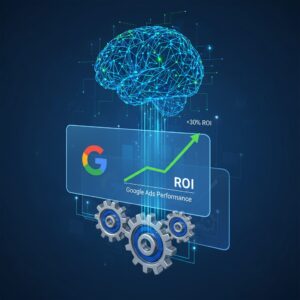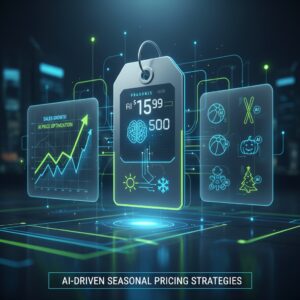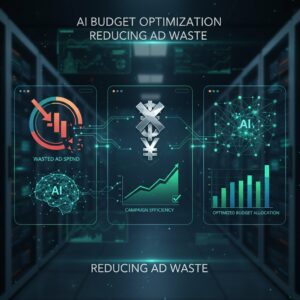
You’re not alone if you’ve ever stared at your AdSense dashboard and wondered, “Is this it? Can I actually make more?” I’ve been there—refreshing the page, hoping for a little bump, feeling both hopeful and frustrated. The truth? Growing ad revenue isn’t about luck. It’s about showing up, getting curious, and being brave enough to try something new. For me, that “something new” was AI-powered SEO—and it changed everything. Here’s how.
The Starting Line: Ad Revenue Reality Check
Let’s start with some honesty. My ad revenue was… underwhelming. I’d worked hard to create content, but the numbers didn’t reflect the effort. I felt invisible in a sea of websites. I wondered if I was missing something obvious, or if I just wasn’t “cut out” for this. If you’ve ever felt that way, take a breath. You’re not alone, and you’re not failing—you’re learning.
Why SEO Matters for Ad Revenue
Here’s the first truth: More traffic equals more ad revenue. But not just any traffic—the right traffic. People who are actually searching for what you offer, who stick around, click, and engage. That’s where SEO (Search Engine Optimization) comes in. SEO isn’t about tricking Google; it’s about making your content visible and valuable to real people.
But SEO can feel overwhelming. Algorithms change, best practices shift, and the competition is fierce. That’s where AI steps in, not as a replacement for your voice, but as a partner—helping you work smarter, not harder.
Step 1: Getting Honest About My Content
Before I brought in any AI tools, I had to get real about my content. Was it solving real problems? Was it easy to read? Was it optimized for search—or just a jumble of thoughts? I made a list of my top-performing posts (even if “top” was a relative term) and asked myself:
- What questions does this post answer?
- Is it better, clearer, or more helpful than what’s already out there?
- Does it use keywords naturally, or does it feel forced?
This self-audit was tough, but it gave me a starting point. If you’re doing this work, give yourself grace. You’re not looking for perfect—just progress.
Step 2: Letting AI Do the Heavy Lifting
AI-powered SEO tools can feel intimidating at first. But they’re just that—tools. Here’s how I used them:
Keyword Research (Without the Guesswork)
Instead of guessing what people searched for, I used AI tools to analyze trends and surface four-word, high-intent keywords. These tools scanned my niche, competitors, and even suggested related questions people actually ask. Suddenly, I wasn’t just writing for myself—I was writing for real searchers.
Content Optimization
AI didn’t write my posts, but it sure helped me optimize them. I used AI to:
- Suggest better headlines that matched what people search for
- Identify sections where I could add more value or clarity
- Highlight opportunities to use keywords naturally, without stuffing
Competitive Analysis
Here’s where AI really shined. It compared my content to top-ranking posts, showing me gaps and opportunities. Was my post missing a key section? Was my formatting making it hard to read? AI pointed it out, and I adjusted.
Step 3: Creating Content That Connects (and Ranks)
With AI’s help, I started creating content that was both human and search-friendly. Here’s what changed:
- I wrote longer, more comprehensive posts that answered multiple related questions.
- I used clear subheadings, bullet points, and easy-to-read formatting.
- I included images, infographics, and summaries—because people (and Google) love them.
- I linked to other helpful posts on my site, keeping readers engaged.
Every post became a resource, not just a placeholder for ads.
Step 4: Technical SEO—The Invisible Work
AI tools also helped me tackle the “invisible” side of SEO: site speed, mobile optimization, meta descriptions, and structured data. These aren’t glamorous, but they matter. Here’s what I did:
- Used AI-powered plugins to compress images and speed up my site
- Checked my mobile layout—because most readers are on their phones
- Generated meta descriptions and alt text that matched my keywords
- Fixed broken links and improved internal linking
Little by little, my site became easier for both people and search engines to love.
Step 5: Tracking Progress (and Staying Patient)
This is where vulnerability comes in. I wanted instant results. Who doesn’t? But SEO is a long game. I tracked my analytics weekly—not obsessively, but with curiosity. I celebrated every small win: a bump in traffic, a new keyword ranking, a longer average visit. These weren’t just numbers—they were proof that my effort was working.
Real Talk: Setbacks and Small Wins
It wasn’t all smooth sailing. Some posts flopped. Some keywords didn’t rank. There were days I felt like giving up. But I kept going, because I believed in my voice—and in the process. I wrote down every win, no matter how small. That first uptick in ad revenue? I celebrated it. It was proof that I could do this.
Step 6: Scaling Up—More Content, More Revenue
Once I saw what worked, I scaled up. I used AI to brainstorm new topics, outline posts, and even generate FAQ sections. I updated old posts with fresh insights and better keywords. I repurposed content into pins for Pinterest and posts for Facebook, driving even more traffic.
Here’s the key: I didn’t try to do everything at once. I focused on one or two strategies, got good at them, then added more. AI made it possible to do more with less time—and less stress.
Step 7: Diversifying Income Streams
As my traffic grew, so did my ad revenue. But I didn’t stop there. I used my SEO momentum to:
- Launch affiliate links in high-traffic posts
- Create a simple digital product (an ebook) and promote it with AI-optimized landing pages
- Start an email list, using AI to write engaging newsletters
Each new stream made my business more resilient—and my revenue more reliable.
Step 8: Practicing Self-Compassion and Consistency
This is the part we don’t talk about enough. Building ad revenue with AI-powered SEO is a marathon, not a sprint. There will be setbacks and slow months. There will be moments of doubt. That’s normal. Give yourself permission to rest, to learn, to try again. Progress is messy, but it’s still progress.
Actionable Tips for Your Own Journey
- Start with a self-audit. What’s working? What’s not?
- Use AI tools for keyword research, content optimization, and technical fixes.
- Write for people first, then optimize for search.
- Track your progress and celebrate every win.
- Update old posts with new insights and keywords.
- Be patient. SEO takes time, but it’s worth it.
Common Pitfalls (And How to Avoid Them)
- Chasing every new SEO trend. Focus on the basics first.
- Writing for algorithms, not people. Your voice matters.
- Comparing your start to someone else’s middle. Your journey is unique.
- Giving up too soon. The results will come—stick with it.
Final Thoughts: You Are Enough
If you take nothing else from this, let it be this: You are enough. Your effort matters. AI is a tool, not a replacement for your heart and your story. You have something valuable to share, and the world needs it. Growing your ad revenue is possible—with patience, courage, and a little help from AI.
Let’s keep going, together.
To your success,
Please check our Business Tips
Please check our partner site – Why Invest?





